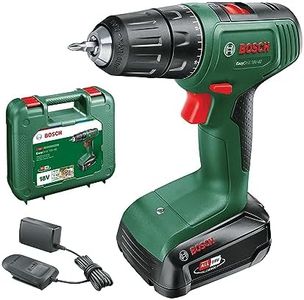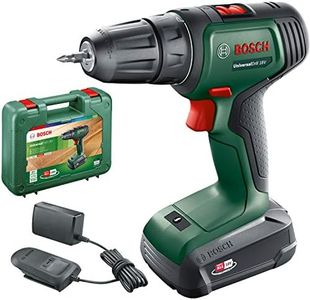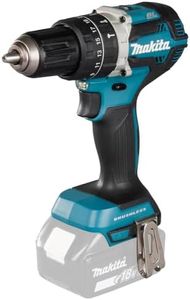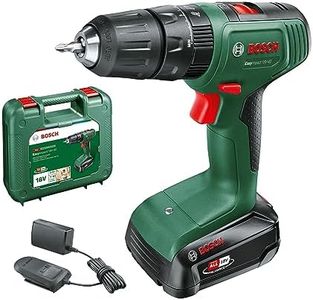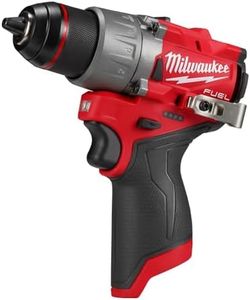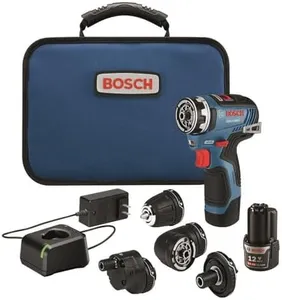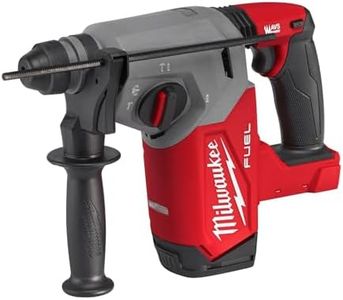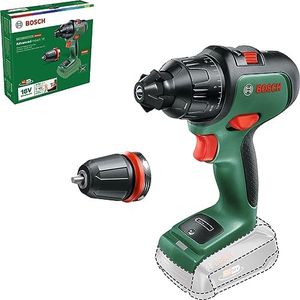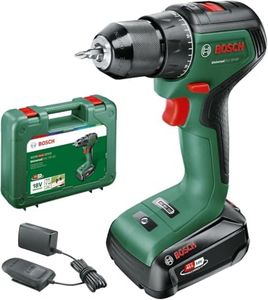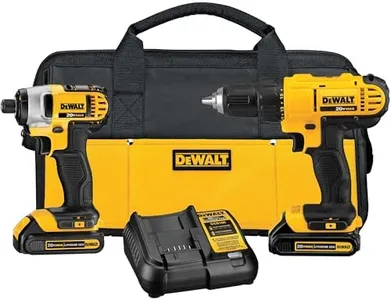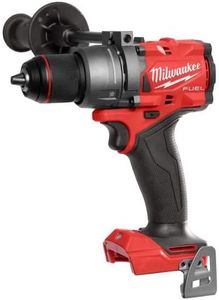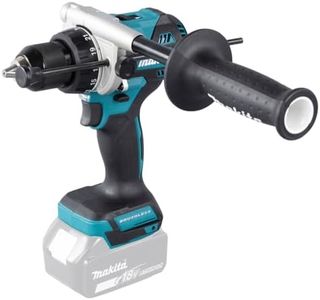We Use CookiesWe use cookies to enhance the security, performance,
functionality and for analytical and promotional activities. By continuing to browse this site you
are agreeing to our privacy policy
10 Best Cordless Drills
From leading brands and best sellers available on the web.Buying Guide for the Best Cordless Drills
Choosing the right cordless drill is all about understanding your own needs and matching them to the features offered. Whether you plan on occasional home repairs or frequent construction projects, your ideal drill will balance power, battery life, ease of use, and comfort. Focus on what tasks you’ll tackle most often, consider how portable and heavy you want your drill to be, and pay attention to the features that will make your jobs easier and more efficient.VoltageVoltage represents the power output of a cordless drill. Higher voltage means more power, which lets you drill harder materials and use larger drill bits. Voltage commonly ranges from 12V to 20V in household models, and can go higher for professional models. Lower voltage drills (12V) are lighter and easier to handle, making them good for light tasks like assembling furniture or hanging pictures. Higher voltage (18V-20V) drills handle tougher jobs, like drilling into concrete or driving large screws. To choose the right voltage, think about the toughest materials you’ll need to work with. If you mainly work on occasional home improvement, a mid-range voltage will be both versatile and comfortable.
Battery Type and Capacity (Ah)Cordless drills use rechargeable batteries, typically lithium-ion today, as they provide longer life, lighter weight, and hold their charge better than older battery types. The capacity of the battery, measured in ampere-hours (Ah), tells you how long the drill will run between charges. Higher Ah ratings (such as 4.0Ah) last longer than lower ones (like 1.5Ah) but are a bit heavier. For short or occasional tasks, lower capacity is sufficient and keeps the drill lighter. If you need your drill for longer periods—like construction projects—opt for higher capacity to minimize interruptions.
Chuck Size and TypeThe chuck is the part of the drill that holds the drill bit in place. Chuck sizes usually come in 3/8-inch or 1/2-inch for general use. A larger chuck size allows you to use bigger drill bits, which is helpful for tougher jobs. Most household tasks are covered by a 3/8-inch chuck, while 1/2-inch is fit for heavier jobs. There are also different types of chucks—keyless chucks are most common today and allow you to change bits quickly by hand, while keyed chucks hold bits more securely for heavy-duty use. Choose a size and type that matches the type of bits you plan to use most and the jobs you want to handle.
Speed and Torque SettingsSpeed (measured in RPM) determines how fast the drill bit spins, while torque is the turning force, important for driving screws or working with different materials. Many drills offer multiple speed settings and an adjustable clutch for torque. Low speed/high torque settings are good for driving screws or working in tough materials; high speed/low torque settings are better for drilling. A drill with variable speed and adjustable torque gives you more control. If you’ll use your drill for lots of different projects, choose a model that lets you fine-tune these settings.
Weight and ErgonomicsDrill weight and how comfortably it fits in your hand can make a big difference, especially if you’ll use it for extended periods. Lightweight drills are easier to handle and maneuver, which is ideal for overhead work or tight spaces. Heavier drills are often more powerful, but can cause fatigue. Consider how the grip feels and whether you can easily reach the controls. If possible, try holding a few drills to see which feels best. Your comfort and ability to control the drill are important for both safety and effectiveness.
Additional FeaturesMany drills offer extra features such as built-in LED lights, belt clips, or brushless motors. LED lights are handy for working in dimly lit areas. Brushless motors tend to run cooler and last longer with better efficiency. These extras can improve your experience, but aren’t essential for everyone. Think about where and how you’ll use your drill, and decide if any additional features will make your experience easier or more pleasant.
